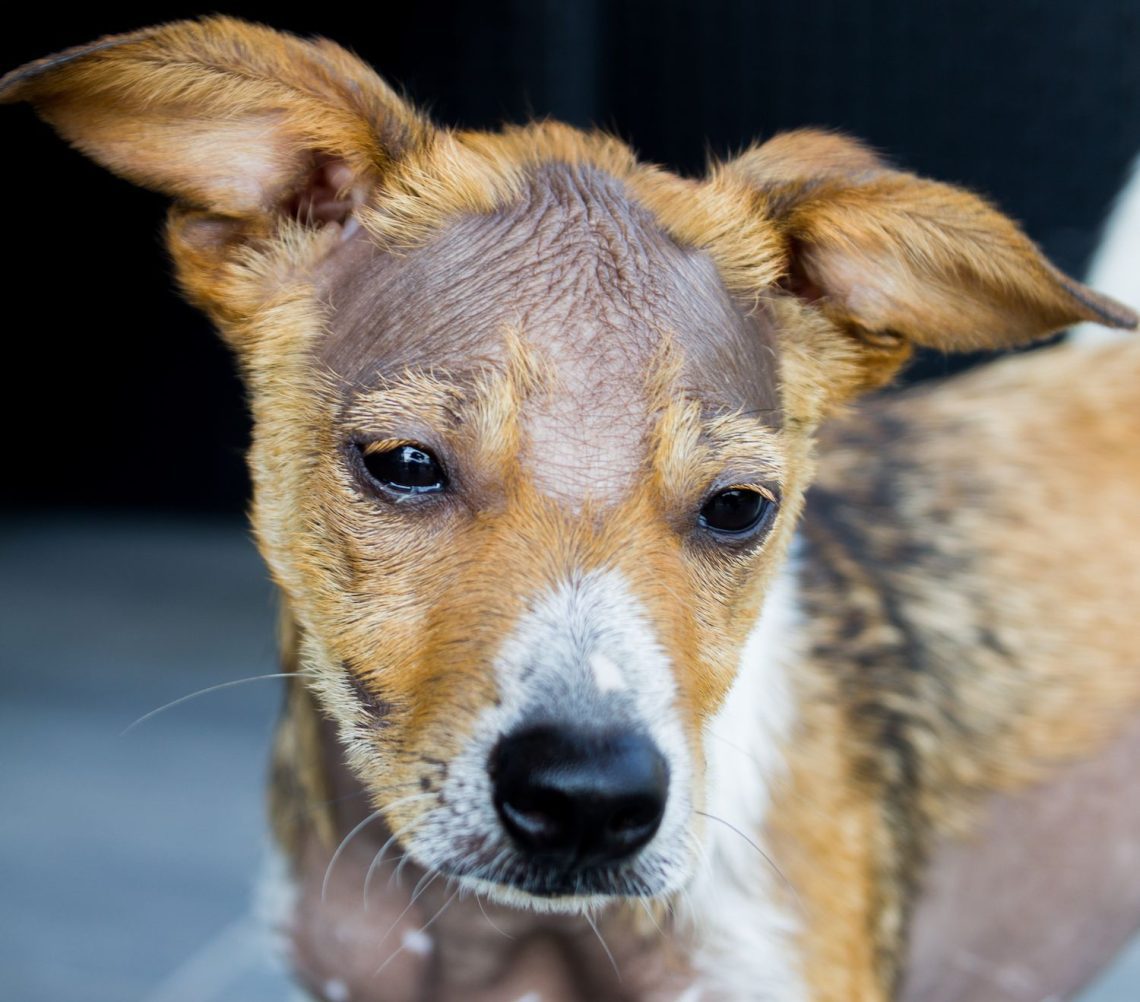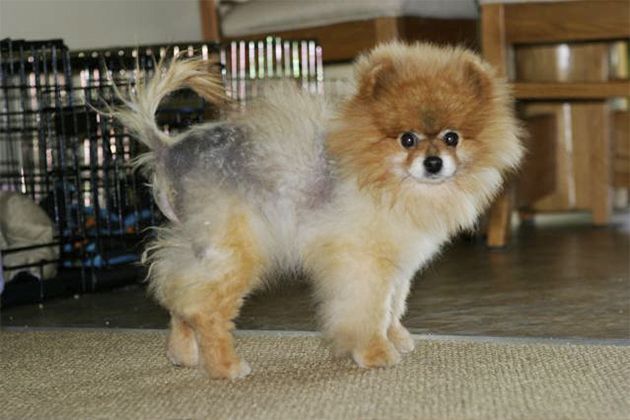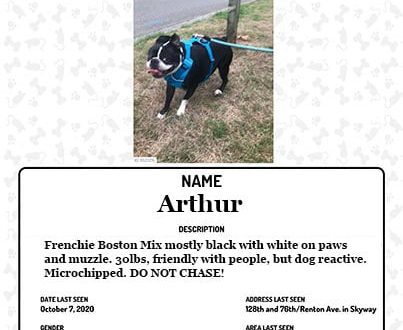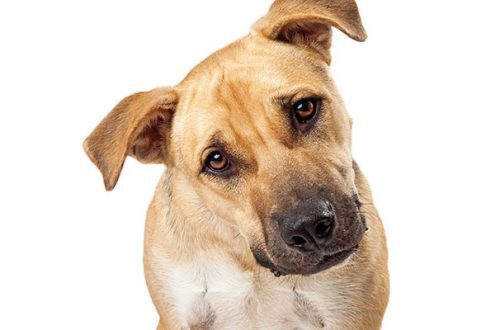
Alopecia in dogs

Why can a dog go bald? Consider the causes of alopecia in dogs and possible treatments.
What is alopecia? Alopecia is a pathological hair loss. There is focal and distinguishing, multiple and single, inflammatory and non-inflammatory, symmetrical and not. This problem is very common in dogs. In terms of frequency of occurrence in dermatology, it ranks second after itching, although it can be combined with it.
Contents
Symptoms of alopecia
The owner can see a hairless area on the pet’s skin. Non-inflammatory alopecia is characterized only by the absence of both guard hair and undercoat. At the same time, the skin in this area looks healthy. With inflammatory alopecia, itching is more often present, the code is reddened, various formations can be visualized: crusts, erosions, ulcers, papules and pustules. If the appearance of alopecia is associated with a systemic disease, then additional symptoms may be present, for example, lethargy, loss of appetite.
Classification of types of alopecia
There are several types of classification of alopecia in dogs:
- by origin (inflammatory and non-inflammatory);
- by localization (multifocal, symmetrically bilateral, local);
- by the time of manifestation (congenital and acquired).
The difficulty in establishing the type of alopecia arises from the lack of a unified classification system, the multiplicity of causes and symptoms of the disease.
Causes of appearance
All the variety of causes of alopecia can be reduced to two groups. Alopecia occurs on the basis of the following reasons:
- hormonal;
- non-hormonal.
These groups have their own characteristic features – with hormonal dysfunction, the formation of symmetrically located foci is noted. With the non-hormonal nature of alopecia, the foci are randomly located. An allergic reaction to the introduction of drugs or at the site of the introduction of an infectious agent manifests itself in the form of a single focus. Non-hormonal causes of hair loss in dogs include:
- allergic reactions (food, drug, hay fever, contact, bites of blood-sucking parasites);
- bacterial and fungal infections;
- parasitic diseases;
- inflammation of the glands of the skin;
- depigmentation of the skin (vitiligo);
- zinc deficiency.
Types and causes of alopecia
There are many types and causes of alopecia. Consider both the most common and rare causes. There are also a number of alopecia that are not amenable to or do not need treatment.
- Parasites. Common cause of alopecia. Moreover, the culprits can be not only fleas and demodectic mites, which cause itching and self-induced (self-combed) alopecia, but also other insects: flies, midges, mosquitoes.
- Atopic dermatitis. Due to itching, the dog acquires alopecia, often asymmetric and inflammatory. Characteristic clinical signs are lesions (at the beginning of the disease it is erythema, later, as a rule, symptoms of secondary infections and signs of chronic inflammation will be added – lichenification and hyperpigmentation) located on the muzzle (around the eyes, on the lips), in the groin and armpits, around the anus , as well as in the interdigital spaces and the auditory canal. And of course itching.
- Dermatophytosis. Dermatophytosis is an infection of the skin, hair, and nails caused by fungi of the genus Microsporum, Trichophiton, or Epidermophyton. Classical symptoms include patches of alopecia and scaling, typically on the face, head, and feet. Itching and inflammation are usually minimal, but occasionally the pruritic, pustular, and crusty forms may mimic allergy, parasitosis, miliary dermatitis, pyoderma, or pemphigus foliaceus.
- Alopecia X. X (X) – since the exact cause of development is still not known. It most often develops in spitz-like dogs. Alopecia is non-inflammatory in nature. Hair loss is more common on the tail and torso.
- Alopecia after haircut. Develops in dogs after machine clipping. The reasons are not completely clear. Alopecia is non-inflammatory. May be of irregular shape, different quantity. Wool begins to grow on its own after 3-6 months.
- Tension alopecia. It is formed in the place of excessive tension of the wool. May be associated with the formation of tangles. It also occurs in dogs that have their ponytails and pigtails tied too tightly on their heads, such as Yorkshire Terriers and Maltese. With a protracted process, the hair may not grow back.
- Alopecia cyclic lateral. It is more often characterized by seasonality, appears in late autumn and grows wool closer to summer. Defeat looks like a geographical map. Therapy is not required.
- Diluted alopecia. Autoimmune pathology that does not require treatment. It often develops in dogs with several specific shades of wool – lilac, blue.
- Alopecia pattern. Noninflammatory alopecia. Sometimes there may be slight peeling of the skin. Toy, dachshunds, Italian Greyhounds, Whippets, Boston Terriers are most susceptible. Areas of hypotrichosis and alopecia appear already at a young age and may progress over time. The disease is characterized by the symmetry of lesions limited to certain areas of the body. There are three main syndromes in pattern alopecia: pinna alopecia, ventral alopecia, and caudal thigh alopecia. Treatment is not required.
- Follicular dysplasia of the hair. It is a rare, late-developing disease in which dysfunction of the follicles leads to both focal hair loss and a generalized disruption of the hair structure. There is no specific treatment for follicular dysplasia. Therapy is based on treating the skin to maintain normal skin renewal and normal follicular development, as well as control of secondary infection.
- Alopecia at the injection site. More often it develops with the subcutaneous administration of drugs containing progesterone, glucocorticosteroids or the rabies vaccine, as well as with the introduction of certain antibiotics.
- Adenitis of the sebaceous glands. Mild to severe flaking of the skin. In short-haired dogs, the scales are usually thin and do not adhere tightly to the skin. In long-haired dogs, the scales are tightly attached to the hair, and the coat may be dull, dry, or matted; often there are follicular casts. Islet (in short-haired breeds) or diffuse (in long-haired breeds) alopecia is often observed. It is most common in Poodles and Akitas, but can occur in any breed.
- Hyperestrogenism. An increase in female sex hormones in males can lead to alopecia or hypotrichosis, mainly on the abdomen and in the groin. There is also sagging of the prepuce, hyperplasia of the mammary glands.
- Hyperadrenocorticism. With hyperfunction of the adrenal glands, the abdomen sags, the muscles atrophy, and symmetrical non-inflammatory alopecia occurs.
- Hypothyroidism. A decrease in thyroid hormones leads to the appearance of patches of baldness. Alopecia with thickened, hyperpigmented, and cold skin (myxedema) is a classic symptom. Common dermatological problems include dry, brittle, dull coats, seborrhea, scaling, hyperpigmentation, and secondary infections. Alopecia may be limited to the tail and bridge of the nose.
- Zinc-dependent dermatosis in dogs. A rare disease in dogs resulting from absolute or relative zinc deficiency. There are two syndromes of this disease. Syndrome I is observed in diets with a normal zinc content. Around the mouth, eyes, on the cheeks and ears, erythema, alopecia, the formation of scabs (crusts), peeling and suppuration are observed (with the addition of a secondary infection). Initially, skin lesions occur in the head region, but skin lesions are possible at pressure points – elbows, hocks, as well as in the genital area and anus. The coat may look dull and dry. With a prolonged lack of zinc, weight deficiency, deterioration in wound healing, inflammation of the membranes of the eye and cornea are possible.
Diagnostics
As you have already seen, there are many problems that manifest alopecia. Many species do not require treatment. However, diagnosis is still required, since it can be quite difficult to determine the species by eye. To determine the causes and type of alopecia, they resort to standard dermatological research methods, such as skin scrapings, Wood’s lamp glow, hair trichoscopy from healthy areas. Cytological and histological examination of the skin. Additionally, blood tests may be required, both standard and to detect changes in hormone levels, ultrasound.
Treatment
Therapy is needed to eliminate the cause. Depending on the cause, it is possible to prescribe treatment for ectoparasites, eliminating diets. Hormone therapy, if necessary. For the treatment of x-alopecia, surgical or chemical castration is used primarily, most often it gives a positive result, but it can only be temporary. Many owners decide not to experiment with treatment, as the problem is only a cosmetic defect. Treatment of severe forms of alopecia must necessarily occur with the participation of a veterinarian. Some infectious or endocrine pathologies can rapidly lead to a deterioration in the condition of the pet, so do not get carried away with self-medication.





